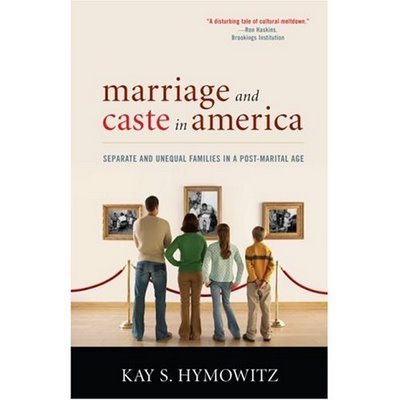 Kay Hymowitz of the Manhattan Institute has an excellent article in The New York Times on single motherhood and the outcomes of children. Hymowitz is no amateur to the subject and she cites an impressive amount of research. For me, one of her most interesting links was a study that “found a connection between the size of a welfare state and rates of both nonmarital births and divorce. Even if you believe that enlarging the infrastructure of support for single-parent families shows compassion for today’s children, it’s not at all obvious that it shows much concern for tomorrow’s.”
Kay Hymowitz of the Manhattan Institute has an excellent article in The New York Times on single motherhood and the outcomes of children. Hymowitz is no amateur to the subject and she cites an impressive amount of research. For me, one of her most interesting links was a study that “found a connection between the size of a welfare state and rates of both nonmarital births and divorce. Even if you believe that enlarging the infrastructure of support for single-parent families shows compassion for today’s children, it’s not at all obvious that it shows much concern for tomorrow’s.”
The 2013 study looked at OECD member countries and the effect expansive welfare states had on family outcomes. The findings indicate that the welfare state increases the amount of marriages. However, it also increases the divorce rate and the amount of out-of-wedlock births.[ref]The quality of these welfare-sponsored marriages may be lacking: “First, a more pronounced welfare state may facilitate divorce by providing or subsidizing goods and services to divorced spouses that would be otherwise only available within marriage (e.g., risk sharing). Put differently, in the case of divorce, the indirect e ffect may dominate the direct effect. Second, marginal marriages–those which would have not been formed without the marriage-promoting component of the welfare state–may have a lower match quality, which increases marital instability. Third, the welfare state may alter assortative mating patterns such that less stable marriages are formed…In principle, it is possible that the increased incidence of divorce drives some of the positive e ffect on the marriage rate (i.e., divorces increase the supply of potential partners in the marriage market)” (pg. 12, fnt. 20).[/ref] “Hence, while the welfare state supports the formation of families, it crowds-out the traditional organization of the family by increasing the divorce rate and the number of children born out of wedlock” (pg. 3). The welfare state’s relation with out-of-wedlock births “is consistent with the view that the welfare state creates incentives by providing higher support for single mothers (direct e ffect, as for instance in the case of AFDC), and with the idea that the welfare state acts as a substitute for a stable union (indirect e ffect)” (pg. 13).
Definitely worth checking out.